Leaf Feeders
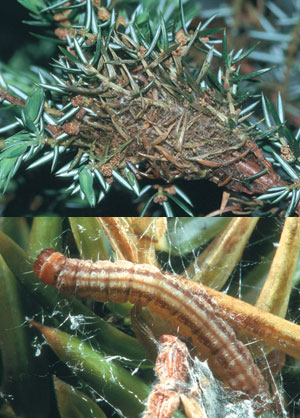
Connecticut Agricultural Experiment Station,
Connecticut Agricultural Experiment Station, Bugwood.org
Adult Juniper webworm moths lay eggs in June and young larvae feed internally as leafminers. As they age, they emerge from the needles and create webbed "nests" which can contain multiple caterpillars. The caterpillar overwinters and feeds again the next spring, inducing bronzing damage. The larvae are red-brown and can be up to 1/2 inch long with two dark brown stripes running down the back. Adults are small, brown, and have white stripes along each wing edge that look like 4 different slightly curved stripes.
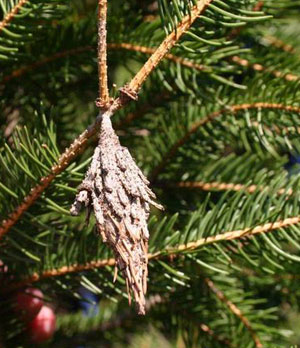
William Fountain, University of Kentucky, Bugwood.org
Bagworms are caterpillars that live in distinctive spindle-shaped silk bags covered with small bits of leaves from the host plant. Large populations of bagworms can strip plants of their foliage and eventually cause them to die. Infestations often go unnoticed because people mistake the protective bags for pine cones or other plant structures. For more information, see Entfact 440.
Sap Feeders
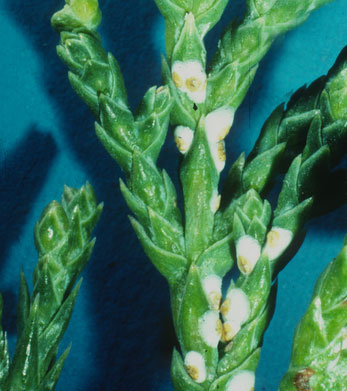
John A. Davidson, Univ. Md, College Pk, Bugwood.org
Juniper scale females are flat and circular, with a white coloration and yellow center, resembling a fried egg. As piercing sucking pests, juniper scale induce yellowing/bronzing and branch dieback as they siphon fluids from the plant. Females are fertilized in the fall and overwinter to lay their eggs in the spring. Eggs generally hatch in mid-May. For more information, see Entfact 429.
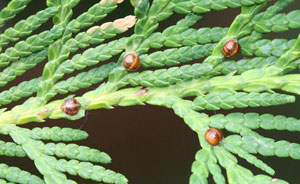
Steven Katovich, Bugwood.org
Adult Fletcher scale females are globular soft scales with a yellow to brown coloration; males become winged reproductives. Immature scales are flatter but swell as they develop. As they feed they can cause tree decline and produce large amounts of honeydew, which can attract other insects and black sooty mold. They overwinter on branches as second instar nymphs and mature the next spring by May. Eggs produced in Spring hatch by June/July.
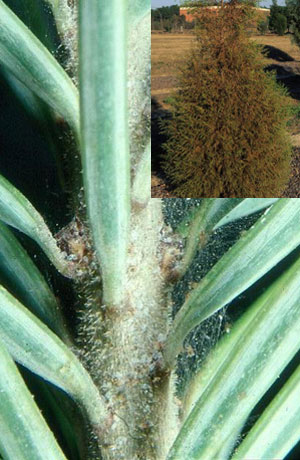
damage (inset): John Ruter, University of Georgia, Bugwood.org;
close-up: Ward Strong, BC Ministry of Forests, Bugwood.org
Spruce spider mite adults are 1/64 inch and can be dark brown, reddish, or dark green in color. They are cool season mites and problems can peak early in the growing season or in the cooler summer or autumn months. They create patchy bronzing damage, dieback, and premature needle drop.